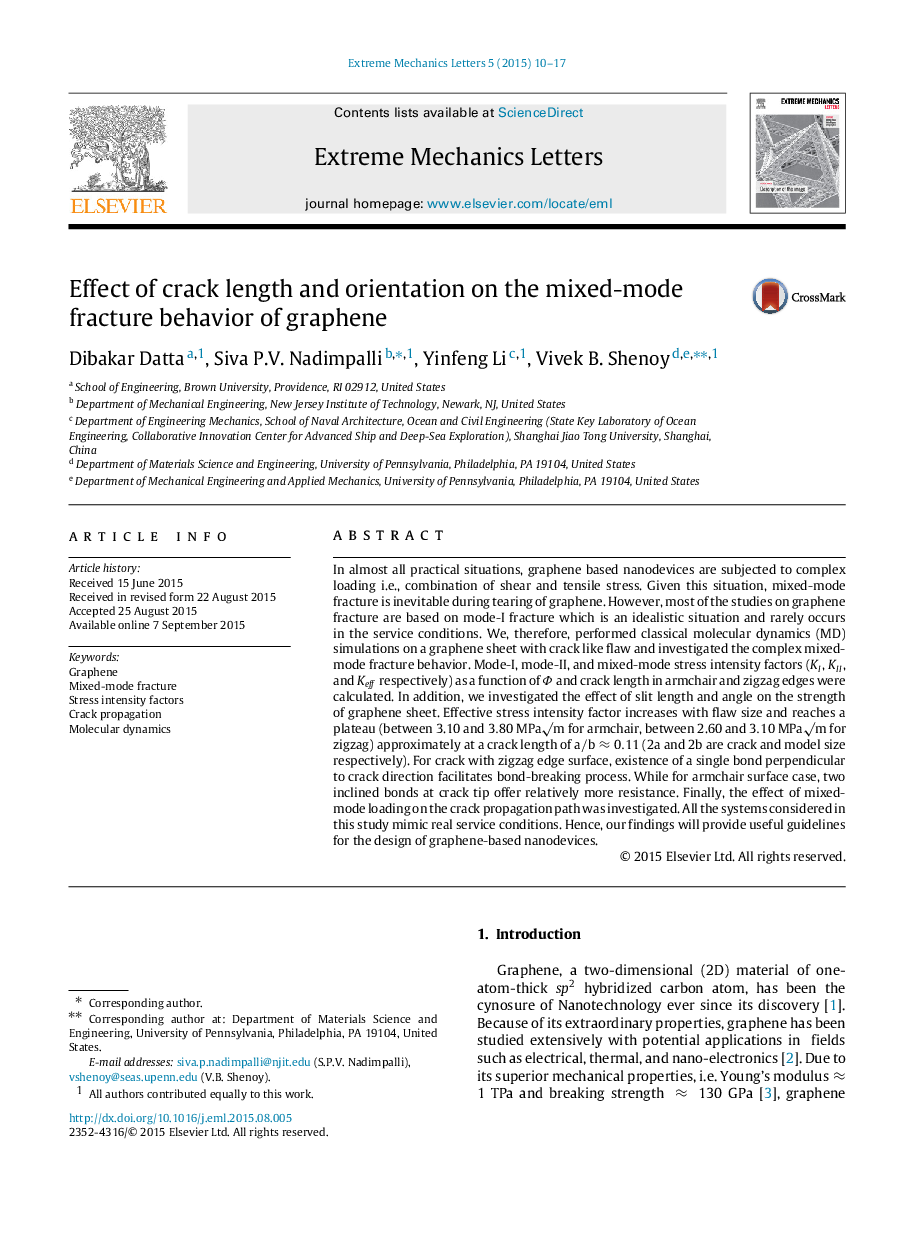| کد مقاله | کد نشریه | سال انتشار | مقاله انگلیسی | نسخه تمام متن |
|---|---|---|---|---|
| 774501 | 1463306 | 2015 | 8 صفحه PDF | دانلود رایگان |
In almost all practical situations, graphene based nanodevices are subjected to complex loading i.e., combination of shear and tensile stress. Given this situation, mixed-mode fracture is inevitable during tearing of graphene. However, most of the studies on graphene fracture are based on mode-I fracture which is an idealistic situation and rarely occurs in the service conditions. We, therefore, performed classical molecular dynamics (MD) simulations on a graphene sheet with crack like flaw and investigated the complex mixed-mode fracture behavior. Mode-I, mode-II, and mixed-mode stress intensity factors (KIKI, KIIKII, and KeffKeff respectively) as a function of ΦΦ and crack length in armchair and zigzag edges were calculated. In addition, we investigated the effect of slit length and angle on the strength of graphene sheet. Effective stress intensity factor increases with flaw size and reaches a plateau (between 3.10 and 3.80MPa√m for armchair, between 2.60 and 3.10MPa√m for zigzag) approximately at a crack length of a/b≈0.11 (2a and 2b are crack and model size respectively). For crack with zigzag edge surface, existence of a single bond perpendicular to crack direction facilitates bond-breaking process. While for armchair surface case, two inclined bonds at crack tip offer relatively more resistance. Finally, the effect of mixed-mode loading on the crack propagation path was investigated. All the systems considered in this study mimic real service conditions. Hence, our findings will provide useful guidelines for the design of graphene-based nanodevices.
Journal: Extreme Mechanics Letters - Volume 5, December 2015, Pages 10–17
